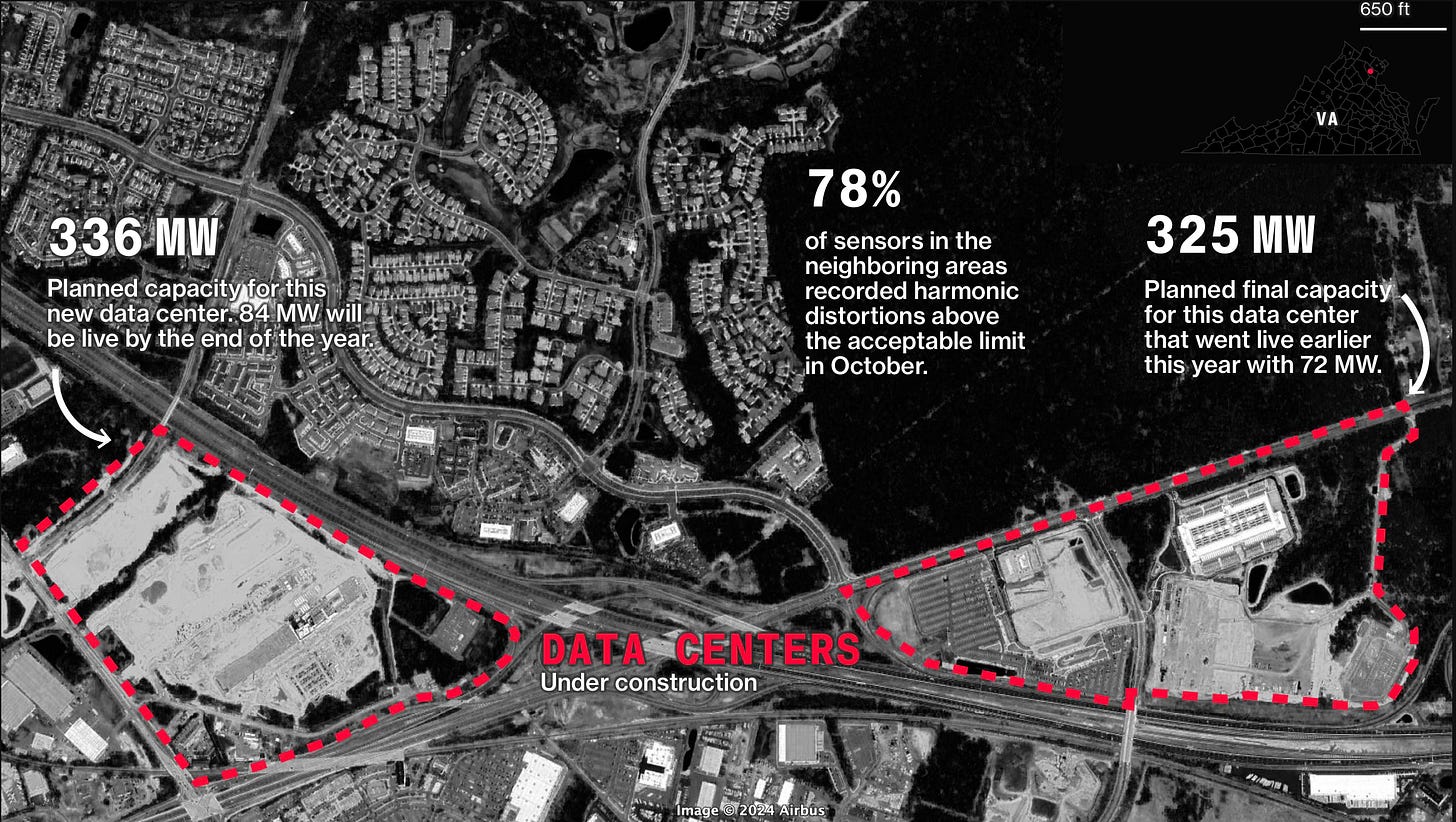The Hidden Cost of AI's Power Hunger: Your Home's Electrical System
How AI datacenters are messing with your electricity supply
Last week, Bloomberg published a fascinating investigation into how AI datacenters are affecting residential power quality across America. The findings are sobering and highlight an overlooked consequence of our AI boom.
What's Happening?
Picture your home's electrical system as a highway. The electricity flowing through your wires should move in smooth, predictable waves – like orderly traffic. But when massive datacenters draw power nearby, they can create what engineers call "bad harmonics" – imagine sudden traffic jams and erratic driving patterns on that highway.
Bloomberg's analysis of 770,000 home power sensors revealed that over three-quarters of highly-distorted power readings are within 50 miles of significant datacenter activity. This isn't just a big-city problem; the distortions appear in both urban and rural areas.
Why Should You Care?
These power distortions aren't just abstract measurements. They can:
Force your home electronics to run hot
Cause motors in refrigerators and air conditioners to rattle
Lead to premature appliance failure
Increase the risk of electrical fires
Result in flickering lights and unstable power supply
The Scale of the Problem
The most striking example comes from Northern Virginia's "data center alley," where Loudoun County alone has about 3,000 megawatts of datacenter capacity. To put that in perspective, one expert quoted in the article explains: "Take your house and increase that by 10,000. That is the difference between your house and a data center."
Important note: all the utilities that Bloomberg asked about this issue said that they don’t detect any power disruption. I don’t really trust them, to be honest, but I am concerned about the correlation vs causation issues here.
This Isn't Your Typical Environmental Concern
What makes this issue particularly interesting is that it's separate from the usual environmental debates about AI's carbon footprint or water usage. Even if these datacenters ran on 100% renewable energy and had zero carbon emissions, they would still create these electrical disturbances.
The Road Ahead
The U.S. is facing a projected 16% surge in electricity demand over the next five years, largely driven by new datacenters. This is more than triple previous estimates. Without major infrastructure improvements, the harmonics issues we're seeing today (if legitimate) are likely to worsen.
A Personal Note
As someone working in the AI industry, this research hits particularly close to home. Every time we run a large language model or train a new AI system, we're contributing to this growing challenge. While we can't (and shouldn't) stop using these transformative technologies, we need to be more thoughtful about how we deploy them.
The tragedy of the commons here is clear: each individual API call or model training run seems insignificant, but collectively, they could be creating disruptions that impact millions of homes across the country.
What Can We Do?
1. Support Infrastructure Investment: The grid needs upgrading to handle these new demands.
2. Monitor Local Impact: If you live near a datacenter, be aware of potential power quality issues. I just ordered a Ting, the power monitor mentioned in this article, to see what my home electricity supply looks like… very curious!
3. Use AI Efficiently: Every computation has a real-world impact. Make it count… and sign up for our AI sustainability tracking platform if you’re curious.
Looking Forward
This isn't just about today's problems – it's about tomorrow's infrastructure. As AI continues to grow, we need to ensure our electrical grid can handle not just the quantity of power needed, but can deliver it in a way that doesn't degrade power quality for everyday consumers.
What do you think about this challenge? Have you noticed any electrical issues in your area? Let me know in the comments below.
Source: Bloomberg's "AI Power Needs Threaten Billions in Damages for US Households"




